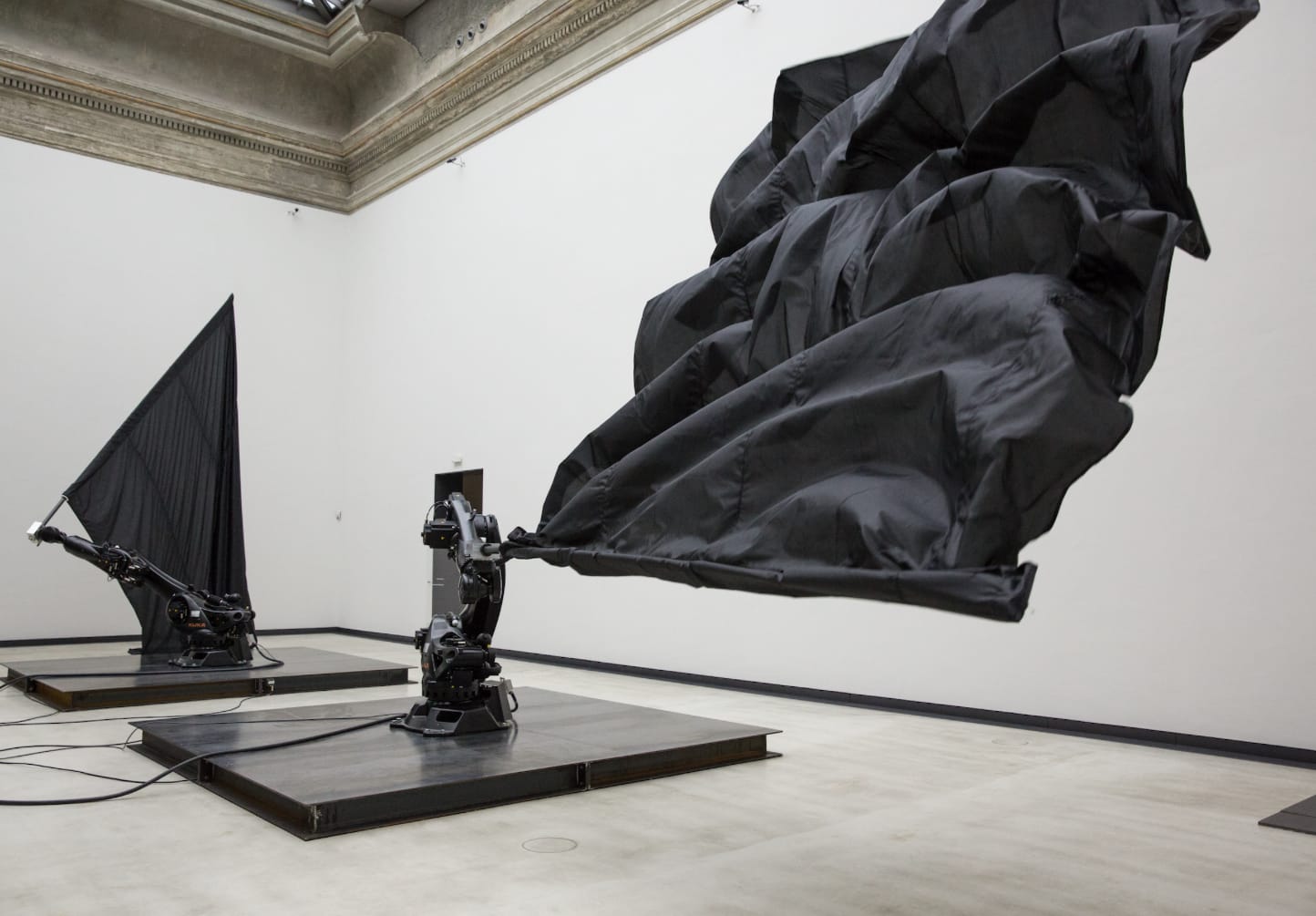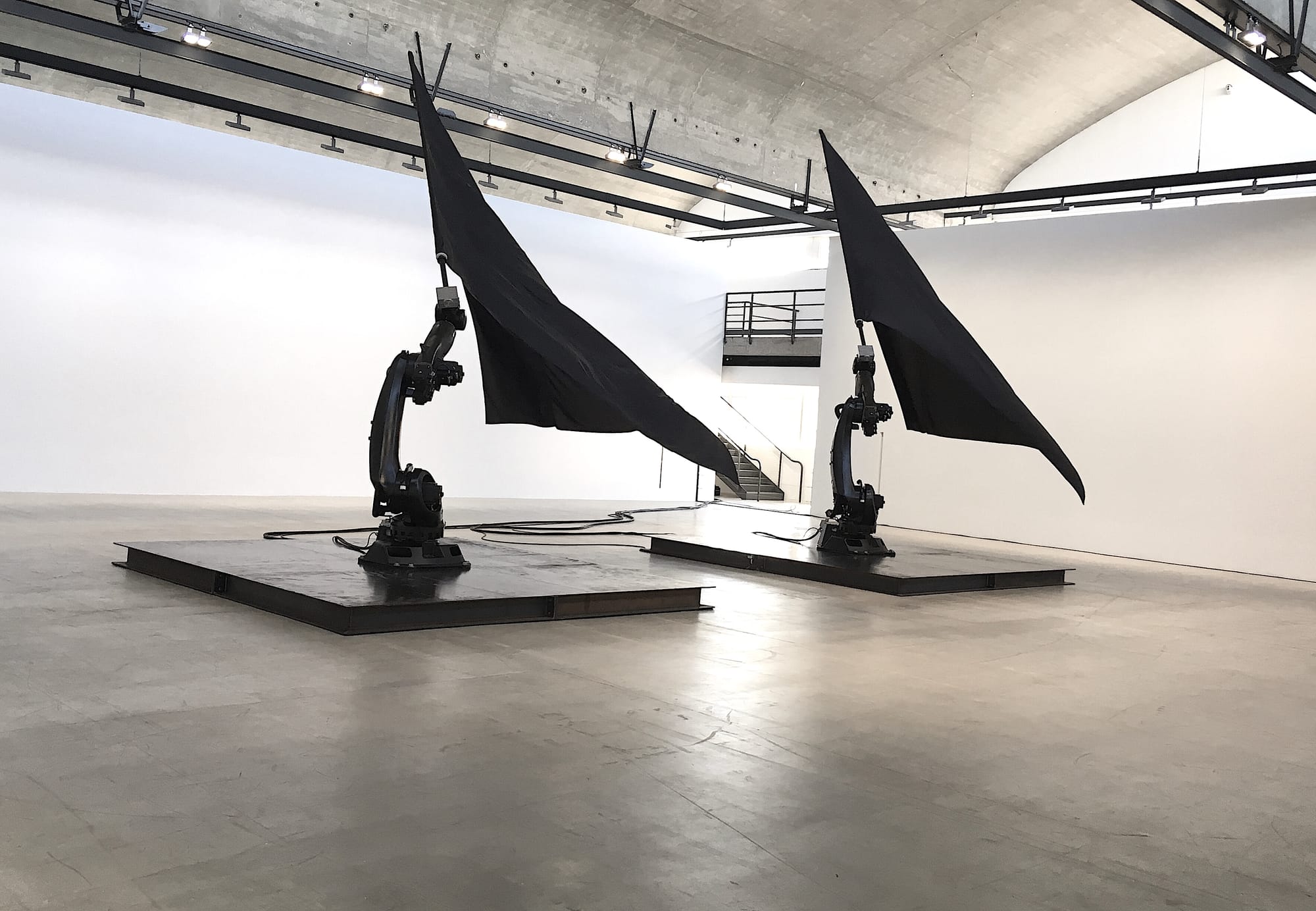William Forsythe’s 'Black Flags': A Dance Between Robotics, Automation, and Human Labor

In Black Flags, renowned choreographer William Forsythe created a piece of choreography where two industrial-grade robot arms wave black flags and mimic a cheer dance routine. Their energetic and precise movements instantly draw in viewers, making them question the work’s underlying meaning. Despite Forsythe stating that he chose the colour black as they are “aesthetically, relatively neutral,” black flags have long been associated with anarchism. This sentiment is exemplified in a line in the infamous protest song, The Black Flag, that spells out “The people’s flag is deepest black." Therefore, Black Flags is reminiscent of these anarchist sensibilities, even if Forsythe has not explicitly stated that connection.

By having industrial robot arms wave them, ones he had sourced from a factory floor, the piece becomes a reminder for innovators, corporations and governments alike to think about how the industrial use of robot-based automation will affect the average everyday worker. At today’s innovation rate, a second Great Depression is bound to happen (if not already happening) since mass layoffs are occurring due to companies preferring robotic strength and Artificial Intelligence (AI) over human labour. However, if the shift to automation is done without precautions, this shift comes at the expense of human jobs. This is why Black Flags by William Forsythe is aligned with the United Nations Sustainable Development Goals of Industry, Innovation and Infrastructure, Decent Work And Economic Growth and Reduced Inequalities.
Black Flags by William Forsythe. Video courtesy of Choreographic Objects/YouTube.
Yet, for Forsythe, Black Flags is about him searching for alternative ‘writing tools’ that can interpret his choreography. “So it’s a digital entity’s idea of horizontality or verticality or circularity or torque. On the other hand, human movement has more complexity because it deviates more,” explains Forsythe in an interview with Wallpaper.
This highlights a certain irony in the piece. This means that Forsythe is showing that robotics and artificial intelligence can easily achieve the perfection that those in performing arts, such as dancers and classical musicians, strive for. But, staying true to the black flags the piece is waving, Forsythe is underlining that human strength lies in its ability to personalize and perform in subjective ways.
Black Flags was also initially commissioned by the Staatliche Kunstsammlungen Dresden, a museum complex in Dresden, Germany, comprising fifteen different museums. It is only fitting that the piece came out of Dresden, which had long been known as the City of Industry. Since the 19th century, the city has hosted everything from the optics industry, to sewing machines, typewriters and even mass luxury foods production. This adds yet another layer of meaning to the piece, as it not only stands on the backs of today’s workers but also of those from the past, who have withstood the test of time and hope to stand taller still in the future.
In Black Flags, William Forsythe uses industrial robot arms to explore the intersection of technology, automation and human labour. While aesthetically neutral, the robotic choreography carries a more profound commentary on the impact of automation on industries and workers, urging viewers to reconsider the role of robotics and AI in modern society. The work reflects the loss of human jobs in the face of technological advancements and calls for a balance between innovation and preserving human labour. By juxtaposing robotic precision with the complexity of human movement, Forsythe emphasizes the unique value of human creativity while reminding viewers of the past and future challenges workers face in a rapidly evolving industrial landscape. Black Flags is a powerful reflection on the consequences of unchecked technological progress and the need for equitable solutions.
Find out more about Black Flags and other pieces by William Forsythe on his website www.williamforsythe.com or his Instagram @william_forsythe_.
